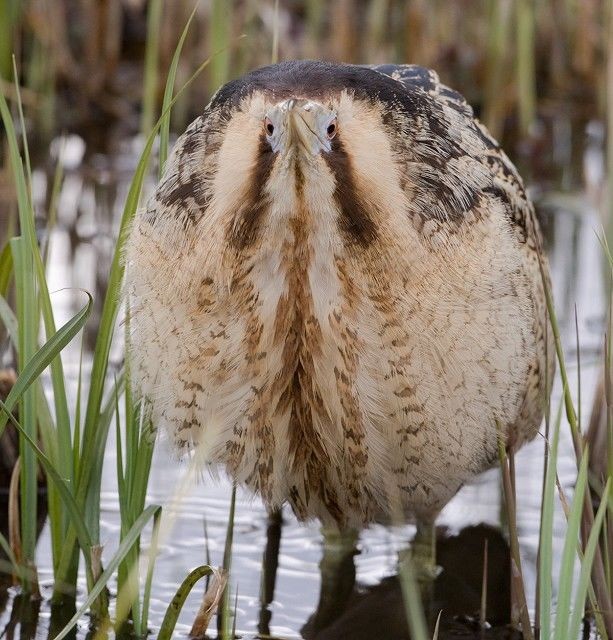Boom in Bittern numbers
In 2010 the Bittern enjoyed its most successful breeding season ever, since its recolonisation of the UK in 1911. This success is even more remarkable considering the long spell of cold weather earlier in the year, which was known to have adversely affected Bitterns at many sites.
The UK monitoring programme for Bitterns revealed the presence of 87 males, delighting those who have worked so hard to prevent this bird from becoming extinct in Britain for a second time. The programme recorded 82 males last year, the previous record year.

Bittern, Far Ings NR, Lincolnshire (Photo: Don Davis)
In 1997 Bittern numbers reached their lowest point since the 1920s, when the survey revealed just 11 males. Since the end of the 1980s it had been known that Bitterns were in trouble, so a programme of monitoring and research was established, leading to the improved management and restoration of reedbeds. Additionally, newly created nature reserves such as the RSPB's Ham Wall, in Somerset, and Lakenheath Fen, in the Suffolk Fens, now hold a third of all nesting Bitterns in Britain.
Dr Mark Avery, Conservation Director at RSPB, said: "The Bittern is perhaps the best example we have of the value of targeted conservation action. With funding from government, the European Commission and the business sector, the Bittern has gone from strength to strength. However, with dire predictions of swinging cuts to Government budgets, we remain deeply concerned that the future for the Bittern and other threatened wildlife in Britain hangs in the balance."

Bittern, undisclosed site, Suffolk (Photo: Kevin Du Rose)
Bitterns nesting in freshwater reedbeds adjacent to the coast in East Anglia are vulnerable to the effects of sea-level rise. The rise in the Bittern population in the Somerset Levels and the East Anglian Fens is welcome news as sites here provide more long-term security for the species in Britain.
Birds establish territories with a characteristic loud booming sound, which can be heard for several miles. By accurately plotting and triangulating these booming males, researchers are able to pinpoint each male, even within extensive reedbeds.

Bittern, Minsmere RSPB, Suffolk (Photo: Jon Evans)
Researchers from the RSPB and Natural England — through the Action for Birds in England programme — recorded Bitterns in reedbeds in several English regions, but the stronghold remains East Anglia, which held 62 males (down one from last year), principally along the Suffolk coast, the Norfolk Broads and increasingly in the Fens. Encouragingly, this Red-listed bird is showing signs of increasing its range as booming males were recorded at 47 sites compared to 43 in 2009. Last year, there were three booming bitterns in the Somerset Levels, but this year 14 males were recorded. Hopefully, this four-fold increase will consolidate the Bittern's return to this network of wetlands.
Counties recording the most bitterns in 2010 were Suffolk (32 males), Norfolk (22 males), Somerset (14 males) and Cambridgeshire (eight males), with Kent and Lincolnshire recording three males each and East Yorkshire recording two.
The Bittern monitoring programme is funded through Action for Birds in England, a conservation partnership between Natural England and the RSPB.

